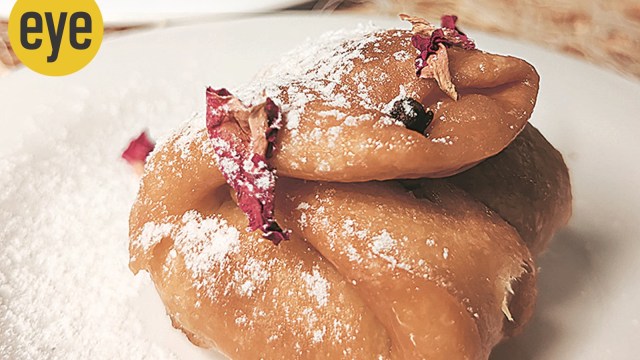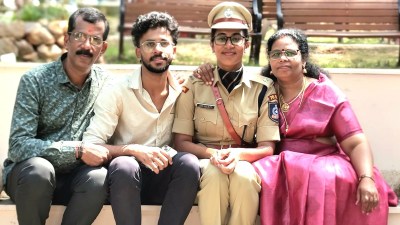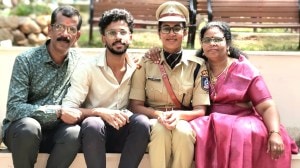Chef Sabyasachi Gorai’s ode to father-son bonding that happened over the science of cooking
The only day my dad would enter the kitchen at our ancestral home in Asansol, far out of Kolkata, and the father-son bonding happened over the science of cooking
 Lobongo lotika
Lobongo lotikaIf there’s one Durga puja food that is synonymous with my personal history, it’s the mellifluous-sounding lobongo lotika. That’s the only day my dad would enter the kitchen at our ancestral home in Asansol, far out of Kolkata, and the father-son bonding happened over the science of cooking. “The temperature of the oil should be just right, not bubbling hot, nor tepid, so keep your eyes peeled for the wisps of smoke,” he said.
The puja then was a simple, homely affair. Everyone planned their holidays to be together for four days. This anchorage held me good when I went to Kolkata to complete my studies.
Dad would roll out the dough with care, thinning it at the edges to avoid crusting, spooning a mound of coconut and kheer in the middle and then wrapping it like an envelope from each side. My job was to hold the pouch in place by piercing a clove through the folds. And then as it sizzled and crisped up in the ghee, with the aroma of the clove wafting through the house, he would scoop it out and dip it in sugar syrup. Once it ballooned up, I would be the first to bite into a burst of textures and flavours, even before the syrup could harden and glisten. So much of it has seeped into me that I even put it on the menu of my restaurant Lavaash in Delhi.
The bhog was my inspiration to become a chef. It was generational perfection as the cooks, mostly women, never tasted it to adjust seasonings, a skill that you don’t acquire at culinary schools. The men cut and chopped the vegetables with military efficiency. And in the end, the family sat down to share a platter. The labra is the greatest example of a one-pot meal with leafy greens, stalks, plantain, brinjal and sweet pumpkin tossed in over ghee or oil tempered with red chilli and paanch phoran (a five-spice mix). Then it is spiced up with ginger and seasoned with salt, sugar, turmeric, red chilli and cumin powder. Traditionally, it’s made in earthenware over clay ovens for juiciness.
The bhog had plebeian origins under the influence of Sri Chaitanya Mahaprabhu, a 15th-century Vaishnavite saint. In fact, zamindars began distributing bhog to the hungry masses during the Bengal famine of 1943. The mutton curry that was prepared without garlic and onion on the ninth day came with the animal sacrifice ritual of the tantrik tradition of Shakti worship.
But the pujas became a grand feast only after the arrival of the East Indian Company, with merchants and zamindars eager to please its officials with the best delicacies and cultural soirees. There would be pulaos, fritters and fish. Sabarna Roy Choudhury, the zamindar who sold territorial rights to the British, made a rich offering to the goddess, complete with fish head, fish cooked with mustard sauce or as a curry. But that could also be because Bengalis are essentially riverine people. There would be hilsa pulao with delicate flavours, which is still prepared in Dhaka.
Over time, the dominant home puja spilled over into the community. The food of the colonial settlers, the English chops, the French coverage or kabiraji, the Mughlai paratha, which originated with Mughal emperor Jahangir’s cook from Burdwan, and the chowmein from Chinese tanners in Tangra began to be co-opted. Come Dashami and women in the household prepared namkeens and barfis in abundance, all packed in jars and had with steaming cups of tea till the first days of winter. An autumn sonata like no other.
Sabyasachi Gorai is a chef, consultant and owner of Lavaash by Saby
Photos



- 01
- 02
- 03
- 04
- 05



























